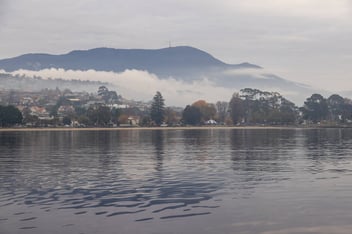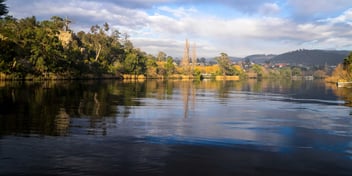Gaining a better understanding of river water quality
Nov 3, 2021
|
1 mins read
 by Cecilia Harris
by Cecilia Harris


Understanding of river water quality is about to be boosted thanks to the launch of a trial of real-time water quality analysers in Tasmania’s River Derwent catchment.
The Derwent Estuary Program (DEP) has received funding from The Ian Potter Foundation to help install real-time water quality analysers in six locations across the catchment.
The new analyser technology was originally developed by a team of researchers at University of Tasmania (UTAS), led by Professor Michael Breadmore, and engineered for commercialisation by Eco Detection and Grey Innovation.
Around 60% of drinking water for the greater Hobart area is drawn from the River Derwent catchment, with previous monitoring showing warning signs that water quality has changed over the last 20 years.
“The analysers will measure nutrients in real time which has many benefits and has the potential to revolutionise how we monitor water quality in our rivers and streams,” DEP CEO Ursula Taylor said.
“Like many catchments, there have been changes in land use, industrial use of freshwater and along with climate change, this has contributed to changes in water quality.
“The new analyser technology will measure nutrients as they have the potential to cause undesirable excessive algal growth including toxic algal blooms.”
Eco Detection Chief Operating Officer Wani Wall said the analysers work in near real-time, meaning they take automatic measurements every four to six hours.
“Data is instantly sent to the Cloud where it can be accessed from anywhere, anytime on mobile devices or computers, enabling fast and improved decision making,” Wall said.
Wall said she is very happy to see the analysers being trialled in Tasmania.
“We’ve been working collaboratively with DEP and UTAS to refine this technology and are delighted that Tasmania will be the first Australian state to trial them in a river system,” Wall said.
Taylor thanked DEP Catchment Scientist Dr Bernadette Proemse for her work in preparing the grant, as well as all the organisations who have committed additional funding and support to the three-year project, including EPA Tasmania, TasWater, Hydro Tasmania and Meadowbank Vineyard.
“We are looking forward to working with our partners to deliver this innovative project,” Taylor said.
The Ian Potter Foundation makes grants nationally to support charitable organisations working to benefit the community across a wide range of sectors including the arts, medical research, public health research, early childhood development, community wellbeing and environmental science.
The Derwent Estuary Program (DEP) has received funding from The Ian Potter Foundation to help install real-time water quality analysers in six locations across the catchment.
The new analyser technology was originally developed by a team of researchers at University of Tasmania (UTAS), led by Professor Michael Breadmore, and engineered for commercialisation by Eco Detection and Grey Innovation.
Around 60% of drinking water for the greater Hobart area is drawn from the River Derwent catchment, with previous monitoring showing warning signs that water quality has changed over the last 20 years.
“The analysers will measure nutrients in real time which has many benefits and has the potential to revolutionise how we monitor water quality in our rivers and streams,” DEP CEO Ursula Taylor said.
“Like many catchments, there have been changes in land use, industrial use of freshwater and along with climate change, this has contributed to changes in water quality.
“The new analyser technology will measure nutrients as they have the potential to cause undesirable excessive algal growth including toxic algal blooms.”
Eco Detection Chief Operating Officer Wani Wall said the analysers work in near real-time, meaning they take automatic measurements every four to six hours.
“Data is instantly sent to the Cloud where it can be accessed from anywhere, anytime on mobile devices or computers, enabling fast and improved decision making,” Wall said.
Wall said she is very happy to see the analysers being trialled in Tasmania.
“We’ve been working collaboratively with DEP and UTAS to refine this technology and are delighted that Tasmania will be the first Australian state to trial them in a river system,” Wall said.
Taylor thanked DEP Catchment Scientist Dr Bernadette Proemse for her work in preparing the grant, as well as all the organisations who have committed additional funding and support to the three-year project, including EPA Tasmania, TasWater, Hydro Tasmania and Meadowbank Vineyard.
“We are looking forward to working with our partners to deliver this innovative project,” Taylor said.
The Ian Potter Foundation makes grants nationally to support charitable organisations working to benefit the community across a wide range of sectors including the arts, medical research, public health research, early childhood development, community wellbeing and environmental science.



